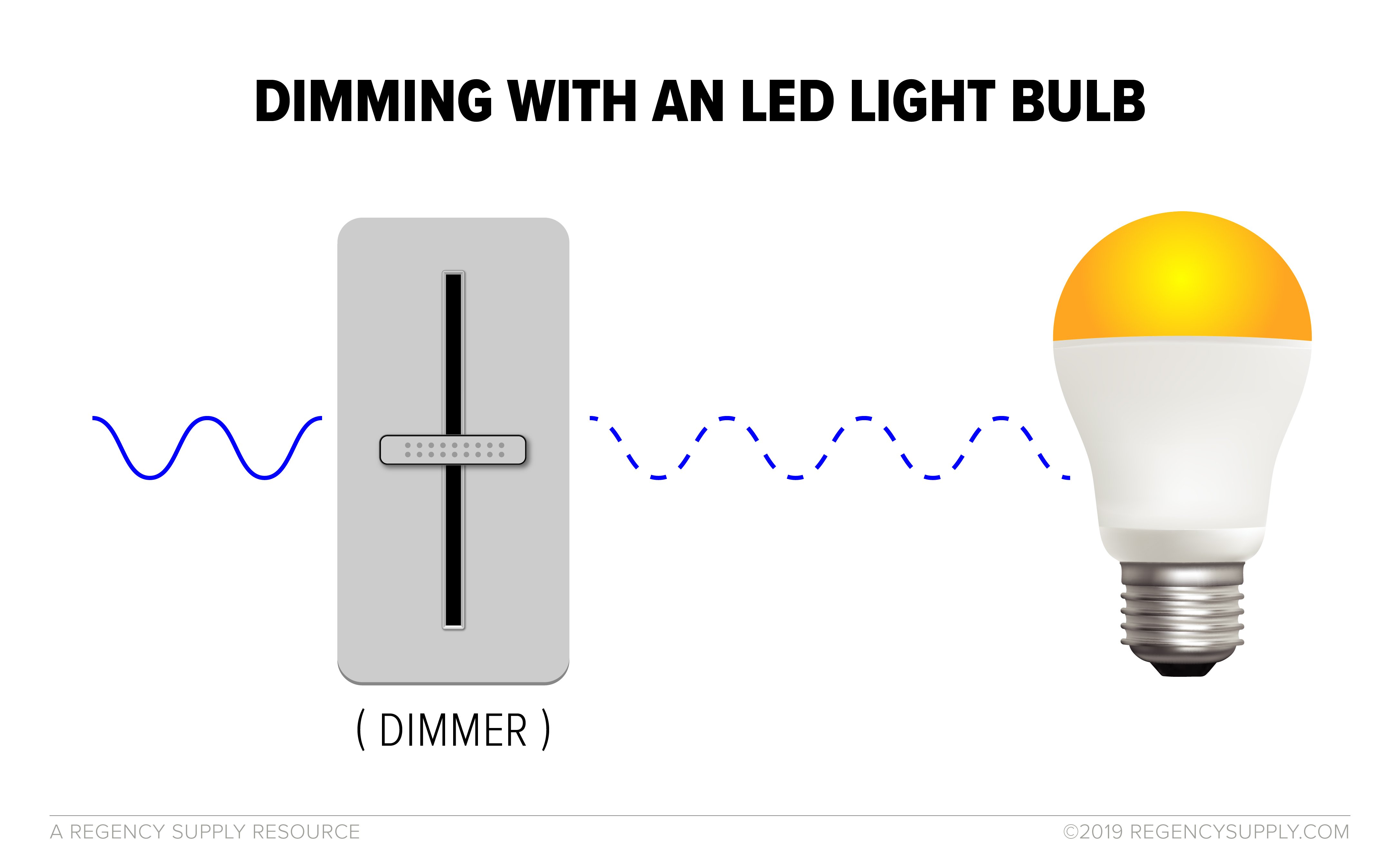Can you stop LED flickering with a "dummy load" or load resistor?

Dimming LEDs can be tricky for a variety of reasons. It can sometimes be difficult to pinpoint the source of the particular issue you're facing, like flickering.
On this blog, we’ve talked about potential problems when you try to run LED lamps or fixtures on dimmer controls. We’ve created this checklist to follow if you’re having issues:
- Are these lamps in fact dimmable?
- Are the drivers in my fixtures dimmable?
- Are they compatible with the controls they're being paired with?
- And are those controls still in working condition, or have they surpassed their life rating?
If you’re still having problems, keep reading. We’re zeroing in on one particular issue: a lack of load resistance.
LED dimming and load resistance
Conventional (TRIAC) dimmer switches – the ones designed to work with incandescent and halogen light bulbs – require a certain amount of "holding current," or wattage, in order to work properly. When paired with an incandescent, the bulb draws enough voltage for the dimmer to work with and reduce. The control cuts the voltage, sending less to the lamp, or bulb, resulting in reduced light output (dimmed lighting).

Here's the problem with trying to dim LEDs with those same TRIAC dimmers: LEDs draw significantly less current – an inadequate amount for the dimmer to properly work, or properly reduce the voltage going to the lamp. The dimmer has so little current to work with that whatever voltage it does reduce ends up manifesting in the LED bulb as choppy, resulting in flickering, or

The key is to supply sufficient load or current to the switch. Some electricians have experimented with adding a higher-wattage incandescent bulb to the same circuit where LEDs were being controlled by a dimmer. This draws adequate current to the TRIAC dimmer, allowing it to better reduce the voltage going to the lamps.
Can you fix LED flickering and other dimming problems by adding an incandescent bulb to the circuit?
The short answer to this question is yes, generally. The higher voltage drawn by the incandescent is often sufficient current for the dimmer to work properly. But this isn't always the case, nor does Regency recommend this as a long-term solution for your dimming issues. It's more of a "Band-Aid" fix than a cure.
Here are some drawbacks to remember if considering this solution:
- For visual purposes, we never recommend mixing different lamp types in the same room or area of a building. You'd want the lone incandescent on the circuit to be in an inconspicuous spot.
- You’ll likely burn through four or five (or many more) incandescent bulbs by the time you need to replace a single LED. You could have a fairly frequent occurrence of having a single burned out bulb. And when the lone incandescent burns out, it will cease to draw current to the circuit, which could cause your LEDs to begin flickering again.
- Generally, while this solution is attainable and seemingly easy on the front end, it can be high maintenance long-term.
Our customers have had varied results with this tactic, and it is not something we recommend.
Another slightly better solution for adding resistance to the circuit is to buy a "load resistor," or a "dummy load". A load resistor essentially serves the same purpose as the incandescent bulb in the solution described above – it simulates an electrical load, drawing sufficient current to the dimmer switch.
Between adding an incandescent bulb to the circuit and using a load resistor, the resistor is probably the preferred solution, as it's likely to require less maintenance long-term.
Long-term solutions for dimming LEDs with no flickering
Though adding an incandescent bulb to the circuit and using a load resistor are both OK LED dimming solutions, they are only short-term fixes and don't get to the heart of the matter – incongruous pairing.
There are two solutions to consider:
- Upgrade electrical components
- Check your wiring
- Wireless lighting controls
1. Upgrade electrical components
If you're not using dimmable LEDs with an LED-compatible dimming control, it will always take some level of twisting and modification to get the two to interact properly, and dim your lighting.
If your electrical work hasn't been updated in the last three to five years, the dimmer switches on your wall are likely TRIAC switches – designed to only work with incandescent lighting. And this is where problems come in.
All of the sudden, the LED retrofit you planned out and got a competitive quote for got more complicated and more expensive. It's no longer just a lamp swap, but now you need electrical work done and need to buy new dimmer switches to work with your new lamps.
We get the pain of that. You may spend more money up-front, but you will get a smoother solution that will last longer overall.
Read more: Here's an overview of common LED dimming issues and how to fix them
2. Check your wiring
If you have compatible lighting and dimmers, you may need to have an electrician take a look at the physical wiring. This work should always be done by a licensed electrician who understands the current building codes in your area.
An electrician can help to identify and grounding problems, shorts, or other issues that would affect the performance of your dimming system.
3. LED-compatible wireless lighting controls
Another option is to try LED-compatible wireless lighting controls. The emphasis here is on "LED compatible."
The fact that controls are wireless doesn't directly have any impact on dimming, but the wireless element means that any wiring associated with installing new controls should be easier and less costly.
You should check for compatibility before you select any controls, but most of the newer wireless controls options are designed to work with LEDs.
With any solution, the cost of retrofitting to a sustainable dimmable LED solution may be painful on the front end, but it's worth the savings and reduced maintenance headaches down the road.












